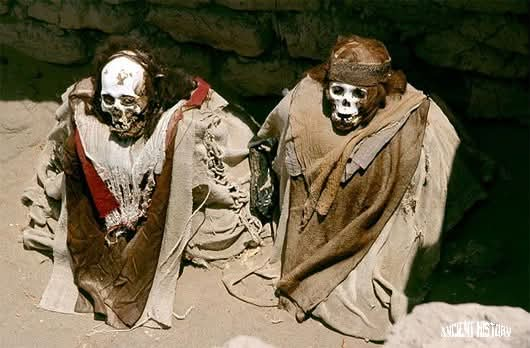Nestled within a weathered stone enclosure high in the arid Andean highlands, this ancient burial site lies undisturbed, a solemn sentinel of a forgotten past. Dating back over a millennium, the tomb is believed to have belonged to an early Andean civilization that thrived in these rugged, windswept terrains long before modern maps were drawn. The dry, thin air and remote landscape have helped preserve the chamber and its contents, offering modern-day archaeologists and visitors a rare and intimate glimpse into pre-Columbian funerary traditions.Within the enclosure, the skeletal remains of the deceased lie curled in a fetal position, wrapped carefully in layers of traditional woven textiles that were likely dyed with natural pigments and adorned with symbolic patterns. Time has faded the vibrant hues, but not their significance. Resting beside the body is a solitary skull—perhaps an offering, a family member, or a revered ancestor—inviting speculation about spiritual beliefs and ancestral veneration among the people who built this tomb.The stone walls that surround the burial chamber are unadorned yet skillfully arranged, reflecting a deep cultural reverence for protection and permanence. In death, as in life, these people sought shelter from the harsh elements, and perhaps from malevolent spirits. Each carefully placed rock speaks of a culture that honored its dead not with grandeur, but with purpose and care.This humble tomb, though modest in scale, serves as a powerful reminder of human resilience and the profound spiritual connection early civilizations held with the natural world and the afterlife. It endures as a silent testament to the enduring bonds between the living and the dead—echoes of a time when life was interwoven with ritual, memory, and the sacred rhythms of the earth.

